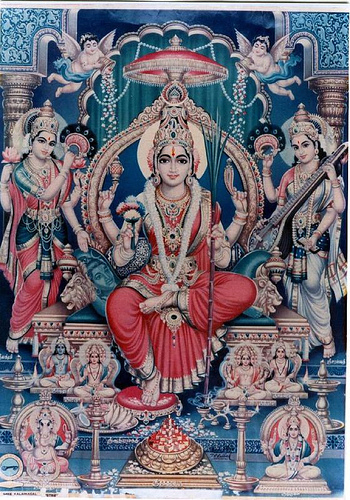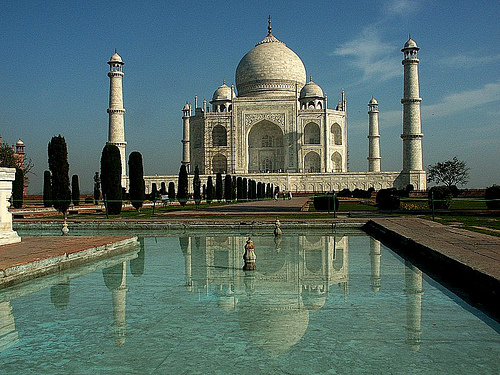Religions in India

India is known internationally for its spiritual culture, being the birthplace of three major religions. If you are thinking of relocating or traveling to India, you should be aware of some of the background of these religious demographics and histories.
Hinduism
Hinduism is the biggest religion in India, which developed about 5,000 years ago. About 82% of Indians are Hindu. There are many gods and goddesses, and the three main ones are Brahma, the creator, Vishnu, the preserver, and Shiva, the destroyer. Then they have goddess consorts: Brahma has Sarasvati, the goddess of learning; Vishnu has Lakshmi, the goddess of wealth and prosperity; Shiva has Parvati. Ganesh is the god with the elephant head, the son of Shiva and Parvati, and he is worshiped mainly in west India. Ganga Ma is the goddess of the river Ganges, and Prithivi is the goddess of earth.
Not all Hindus worship all of these gods. Some only worship Vishnu or only Shiva, and the characters and images that represent these gods. Business people often worship Lakshmi, as she represents wealth. Many Hindus believe that all of these gods and goddesses are just different representations of one God.
Reincarnation is a central Hindu belief, in which one’s deeds, or Karma, determine their fate. One with good Karma will enter a better life. Those with bad Karma are deemed to be born again and again. Eventually, those who have passed the best Karma will achieve “Moksha,” and be liberated from this cycle.
Islam:

About 13% of Indians are Muslims, making it the world’s third largest Muslim-populated country. Some claim that the large Muslim population is due to invaders. Others claim it came from Arab traders around the 7th Century, as Arabs had been trading with Indians for hundreds of years, before Islam was even created. It is probably a combination of both, as both events were continuous and many people converted for many years. Many Indians converted to Islam in the 14th century because of the advent of Sufi, a mystical religion that follows devotion instead of strict following of doctrines. The Indian Muslims are divided into the two major sects, Sunni and Shia, and there are differences between these sects, like in the rest of the Islamic world. Indian Muslims are concentrated in the states of Uttar Pradesh, West Bengal and Bihar.
Christianity
Christianity is India’s third largest religion, making up 2.5% of the population, most of which are Catholic. Most of these people have converted from Hinduism or Islam. They are spread all throughout India in all different parts of society, but are concentrated in South India, the Konkan Coast and the Northeast. Christianity was introduced into India in 52 AD by Saint Thomas, and there had been many missionary establishments ever since.
Though Buddhism and Jainism were developed in India, less than 1% are followers of either.

great article, you forgot to mention Sikhs and the cool thing about India although there are problems between the religions by in large most folks live in harmony with each other and neighbours from different religions share food together
Watch Jodhaa Akbar movie